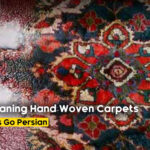
Important Tips for Maintaining and Cleaning Hand-Woven Carpets
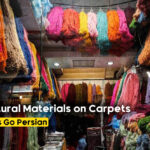
The Impact of Colors and Natural Materials on the Quality of Persian Carpets
Iran is home to some of the world’s finest and most famous carpets, with each region offering its distinct style, design, and craftsmanship. Persian carpets are celebrated not only for their beauty and intricate designs but also for their regional diversity. The carpets woven in different parts of Iran reflect the local culture, environment, and traditions, creating a rich tapestry of styles that are unique to each area. In this blog post, we will explore the most prominent carpet-weaving regions of Iran and the unique characteristics that make each of them stand out.

Exploring the Different Carpet-Weaving Regions of Iran and Their Unique Features
1. Tabriz: The Center of Fine Craftsmanship
Location and History
Located in the northwestern province of East Azerbaijan, Tabriz is one of Iran’s oldest carpet-weaving centers, with a history dating back to the Safavid Dynasty (1501–1736). The city has long been a hub for art and commerce, contributing to its development as a key producer of fine carpets.
Unique Features of Tabriz Carpets
- High Knot Density: Tabriz carpets are known for their high knot density, often exceeding 500,000 knots per square meter. This results in extremely detailed and intricate designs.
- Medallion Designs: The most common feature of Tabriz carpets is the central medallion, which is often surrounded by floral patterns or arabesques.
- Floral and Hunting Scenes: Many Tabriz carpets incorporate floral motifs, as well as detailed hunting scenes, symbolizing Persian nobility and royal traditions.
- Color Palette: The colors typically used in Tabriz carpets include shades of red, ivory, blue, and green, which give them a vibrant yet harmonious appearance.

Tabriz Carpet
2. Isfahan: A Masterpiece of Elegance and Precision
Location and History
Isfahan, located in central Iran, has a rich history of art and architecture, making it a key center for high-quality Persian carpets. Under the reign of Shah Abbas I in the 16th century, Isfahan became a cultural and artistic capital, greatly influencing the production of Persian carpets.
Unique Features of Isfahan Carpets
- Silk and Wool Blends: Isfahan carpets are often woven from a blend of silk and wool, giving them a luxurious texture and sheen.
- Intricate Floral and Geometric Patterns: These carpets feature highly detailed floral motifs, arabesques, and geometric patterns, reflecting the city’s stunning architectural designs.
- Ivory Backgrounds: One of the most recognizable features of Isfahan carpets is the use of ivory or light-colored backgrounds, which allow the intricate designs to stand out beautifully.
- Knot Density: With a high knot count (often over 600,000 knots per square meter), Isfahan carpets are known for their fine detail and high-quality craftsmanship.
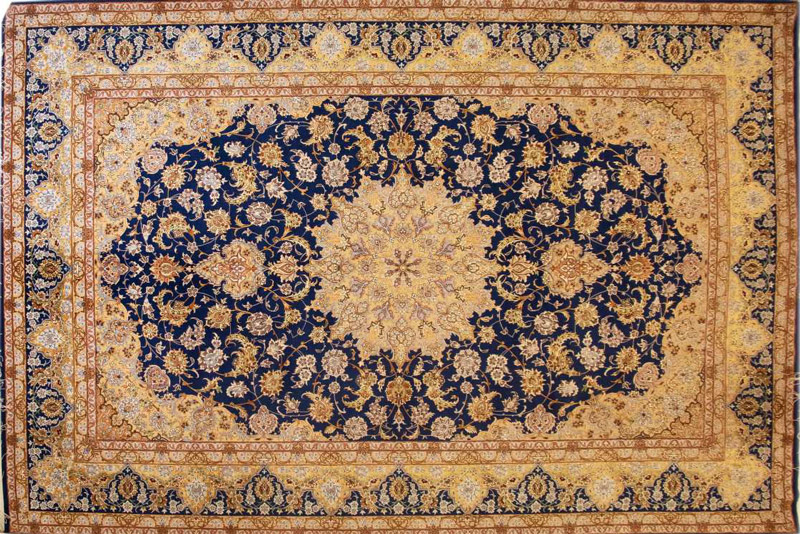
Isfahan Carpet
3. Kashan: The Hub of Luxurious Carpets
Location and History
Kashan, located on the edge of the central desert of Iran, has a long history of carpet weaving that dates back to the Safavid era. The city is famous for producing some of the most exquisite Persian carpets, often woven from fine wool and silk.
Unique Features of Kashan Carpets
- Medallion and Corner Designs: Kashan carpets typically feature a large central medallion, with corner pieces that echo the medallion’s design, surrounded by floral and vine motifs.
- Silk Carpets: Many high-end Kashan carpets are woven from pure silk, giving them a luxurious feel and a reflective sheen.
- Deep, Rich Colors: Kashan carpets are known for their rich reds, navy blues, and ivory tones, which create a striking contrast against their intricate designs.
- Elegance and Symmetry: Kashan carpets are highly symmetrical, with balanced patterns that exude elegance and formality.

Kashan carpet
4. Qom: The City of Fine Silk Carpets
Location and History
Qom is a relatively new carpet-weaving center, with production beginning in the early 20th century. However, Qom has quickly gained a reputation for producing some of the finest silk carpets in Iran.
Unique Features of Qom Carpets
- 100% Silk Carpets: Qom is famous for its pure silk carpets, which are exceptionally delicate and luxurious.
- Intricate, Small Designs: These carpets often feature highly intricate designs, including floral motifs, geometric patterns, and medallions, created with great precision due to their high knot density.
- Vivid, Bright Colors: Qom carpets are often woven in vibrant, bright colors such as light blues, gold, red, and green, creating a lively and striking appearance.
- Small Sizes: Many Qom carpets are smaller than other Persian rugs, making them perfect for wall hangings or display pieces rather than floor coverings.

Qom Carpet
5. Nain: A Blend of Tradition and Sophistication
Location and History
Located near Isfahan, Nain is a relatively small city, but it is well-known for producing some of the most sophisticated and elegant Persian carpets. Carpet production in Nain began in the early 20th century, and the region has since developed a distinct and recognizable style.
Unique Features of Nain Carpets
- Fine Wool with Silk Highlights: Nain carpets are typically woven from fine wool, with touches of silk used to highlight details and add texture to the design.
- Soft, Pale Color Palette: Unlike the bold colors seen in other regions, Nain carpets often feature a softer color palette of cream, ivory, beige, blue, and light brown, creating a more subtle and refined appearance.
- Elegance in Simplicity: Nain carpets are known for their elegance and understated beauty, with simple medallions and geometric patterns surrounded by floral designs.
- High Knot Density: These carpets are usually finely woven, with 400,000 to 600,000 knots per square meter, giving them an exceptionally detailed and smooth finish.
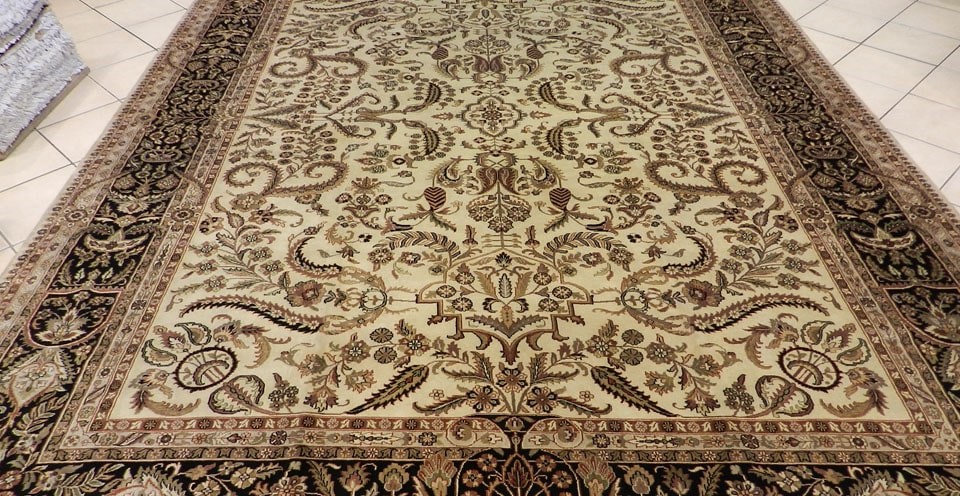
Nain Carpet
6. Kerman: The Origin of Richly Colored Carpets
Location and History
Located in southeastern Iran, Kerman is one of the oldest and most important carpet-weaving centers in the country. The region has been producing carpets since at least the 17th century and is renowned for its use of bold and vibrant colors.
Unique Features of Kerman Carpets
- Bold Color Schemes: Kerman carpets are known for their use of rich reds, blues, and pinks, which create a vivid and lively appearance.
- Curvilinear Floral Designs: Kerman carpets often feature curvilinear floral motifs, with elaborate patterns that swirl across the carpet in delicate detail.
- Vase Carpets: One of Kerman’s most famous styles is the vase design, where floral arrangements in vases are depicted in stunning detail, symbolizing paradise.
- Durable and Sturdy: Woven with high-quality wool, Kerman carpets are highly durable and well-suited for areas with moderate to high foot traffic.
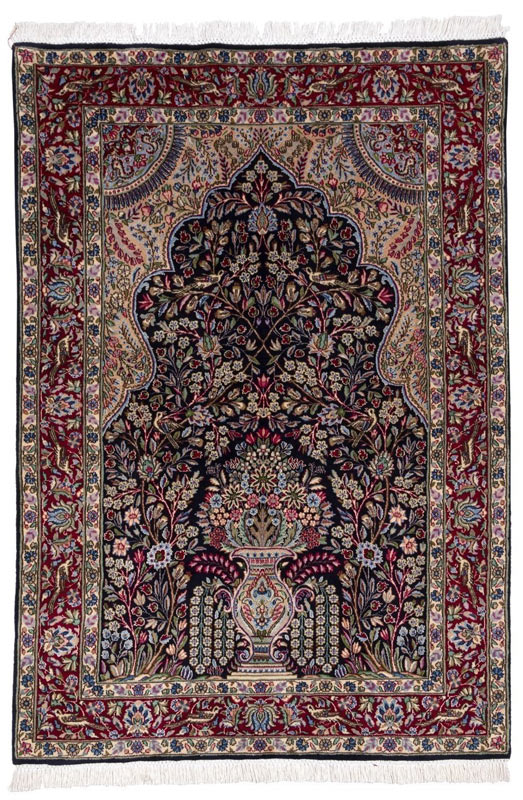
Kerman Carpet
7. Qashqai: Tribal Artistry and Bold Designs
Location and History
The Qashqai are a nomadic tribe in southwestern Iran, known for their tribal carpets, which are distinct from the more formal styles produced in urban centers. These carpets are woven by hand by Qashqai women and reflect the nomadic lifestyle and artistic traditions of the tribe.
Unique Features of Qashqai Carpets
- Geometric Patterns: Qashqai carpets are characterized by bold geometric motifs and tribal symbols, often featuring diamonds, hexagons, and stylized animal motifs.
- Bright, Natural Colors: These carpets use natural dyes derived from plants and minerals, resulting in vibrant reds, blues, yellows, and oranges.
- Asymmetrical Designs: Unlike the symmetrical designs found in urban carpets, Qashqai rugs often feature more organic and spontaneous patterns, adding to their charm and authenticity.
- Durable and Practical: Woven for practical use in nomadic homes, Qashqai carpets are durable and made to withstand heavy use, making them ideal for high-traffic areas.
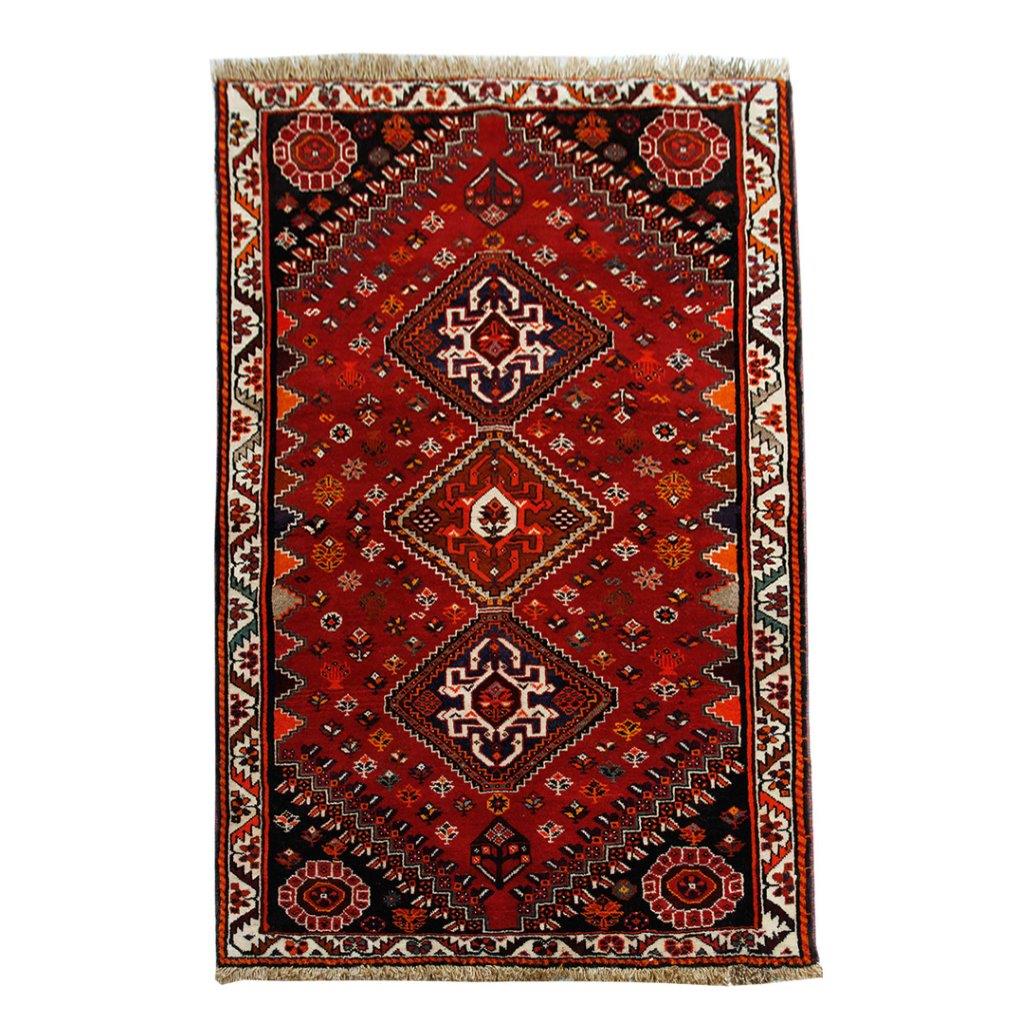
Qashqai Carpet
Conclusion
The different carpet-weaving regions of Iran each offer their distinct styles, techniques, and cultural influences. From the sophisticated silk carpets of Qom to the tribal artistry of Qashqai, Persian carpets reflect the diversity and richness of Iranian craftsmanship. By understanding the unique features of carpets from each region, you can choose a carpet that not only enhances your interior space but also carries with it a piece of Persian history and culture.



















